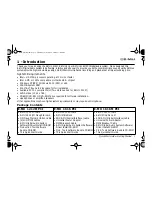
1. Connect the Delta 1010LT’s S/PDIF Out to the DAT’s coaxial S/PDIF Input using
a good quality cable.
2. Connect the DAT analog outputs to some type of amplified sound system. The
sound system should be equipped with speakers or headphones.
3. Because you will be playing back at the recorded sample rate, you will want to set
the Delta 1010LT’s master clock to use the 1010LT internal crystal. Do this by
opening the Hardware Settings page of the Delta Control Panel software and
under Master Clock, selecting "Internal Xtal." Also, under the Codec Sample Rate
section you may uncheck "Rate Locked" if it is previously checked. This allows for
more flexible sample rate playback.
4. In order to verify proper S/PDIF Output routing, open the Patchbay/Router
page of the control panel software. In the "H/W Out S/PDIF" column, select the
radio button named "WavOut S/PDIF." Now everything that is sent by your
software to the "WavOut S/PDIF" device will be routed to the hardware S/PDIF
output, and consequently to the DAT.
5. Next let’s make sure the S/PDIF output format is correct. Open the S/PDIF page
of the control panel software. Under Digital Output Format, choose "Consumer."
Uncheck "Advanced" if it is checked previously. Now click on the "Restore
Defaults" button to set the default S/PDIF outgoing status bits. This will disable
copy protection and also set the emphasis to "none," allowing the DAT to accept
and record the audio properly.
6. Within your recording software, select "WavOut S/PDIF Delta-1010LT" as the
audio output device.
7. Start your DAT recording and then start your software playing. You should be able
to hear the DAT material through your sound system. This verifies that the digital
audio is making it into the DAT correctly.
48












































